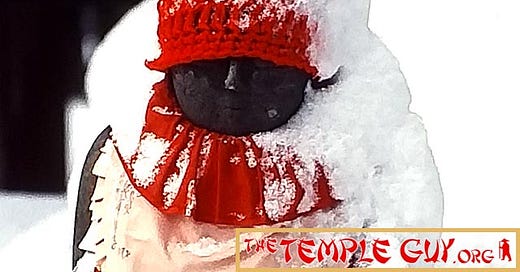Ep. 030: Another Snowy Day at Nariai-ji
A visit to a snow-clad mountain and the "Bridge to Heaven"
When you mention pilgrimages in Japan, the 88-Temple Pilgrimage of Shikoku gets all the glory. It's dedicated to Kukai (Kobo Daishi, 774-835), the monk who brought the esoteric sect of Shingon Buddhism to Japan after studying it in China.
Don't get me wrong. I've got nothing against that pilgrimage (I've done it!) or the Daishi (I've even visited sites from his sojourn in China). But there are at least three other major pilgrimages in Japan, and innumerable minor ones.
You guessed it: I've done the Big Three, and a half-dozen of the others.




